You are using an out of date browser. It may not display this or other websites correctly.
You should upgrade or use an alternative browser.
You should upgrade or use an alternative browser.
Tanchjim Prism
- Added by Animagus
- Create date
Animagus
Reviewer at Twister6
Pros: Harman target inspired well balanced signature, good clarity, very clean soundstage space, very good imaging and separation, bass punch and definition, resolving midrange with forward upper-midrange, smooth but resolving treble, strong instrument definition.
Cons: Not much for me personally. Subjective - People who like their pinna gain served on the easier side of the Harman Target might find Prism's midrange presentation a little too forward. I personally dig it.
About Tanchjim.
Tanchjim are based out of Nanning, China. They have IEMs like Darling, Oxygen, Hana, Hana 2021, Tanya, Blue and Cora in their line up, with Oxygen being their most successful product till date. Their IEMs are generally tuned around the Harman Target curve. If you'd like to read my take on Oxygen, you can read it here.Links - Tanchjim Prism (Shenzhen Audio)
The product was provided to me free of charge for the review in exchange for my honest opinion.
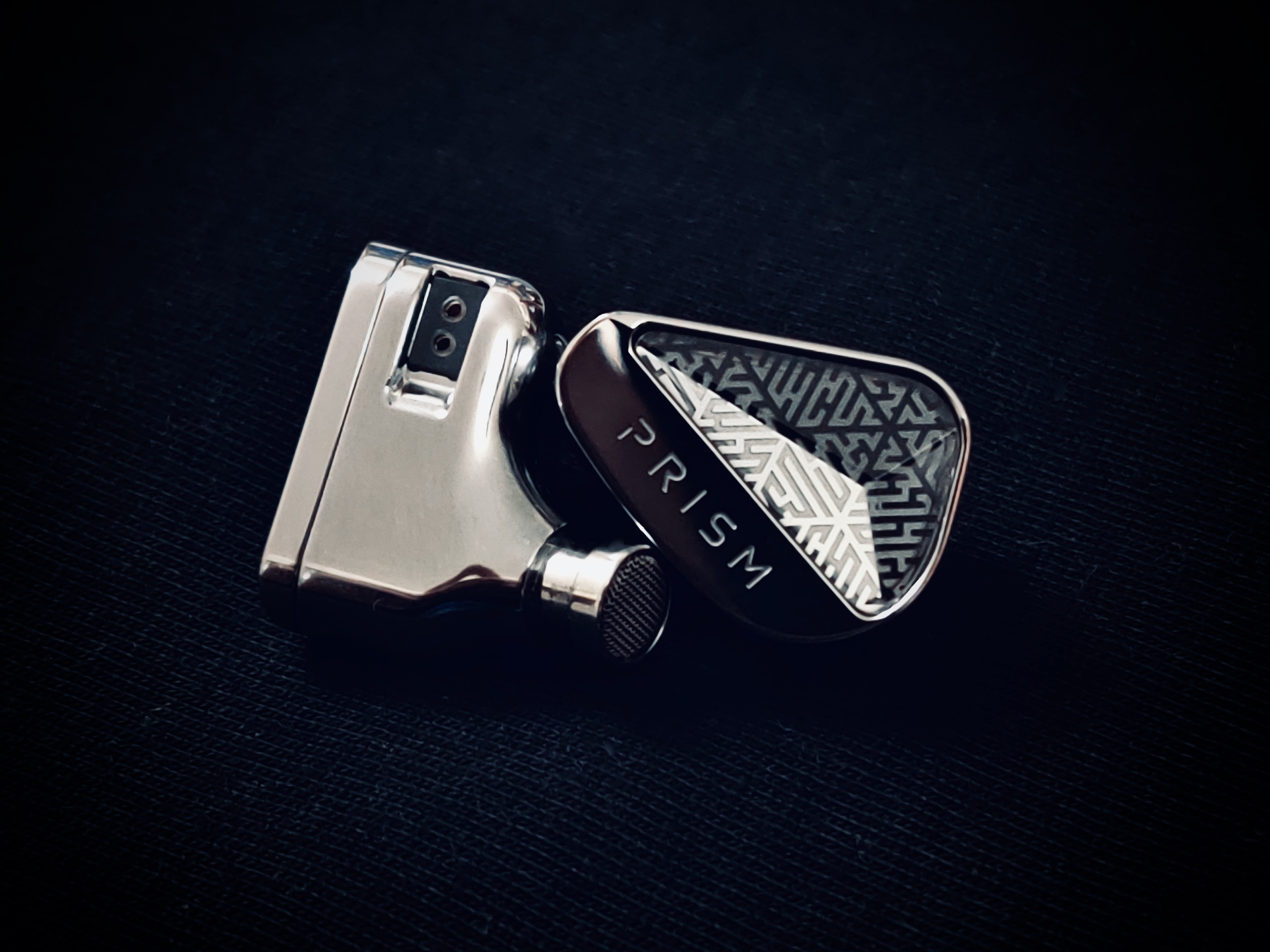
Technical Specifications.
- Driver Config - 1DD + 2BA
- Drivers - DMT4 dynamic driver and dual Sonion balanced armature
- Frequency response - 7-50kHz
- Sensitivity - 125dB
- Impedance - 16 Ω
- THD - < 0.15%
- Cable material - Litz single crystal copper silver-plating + Litz oxygen-free copper composite mixed
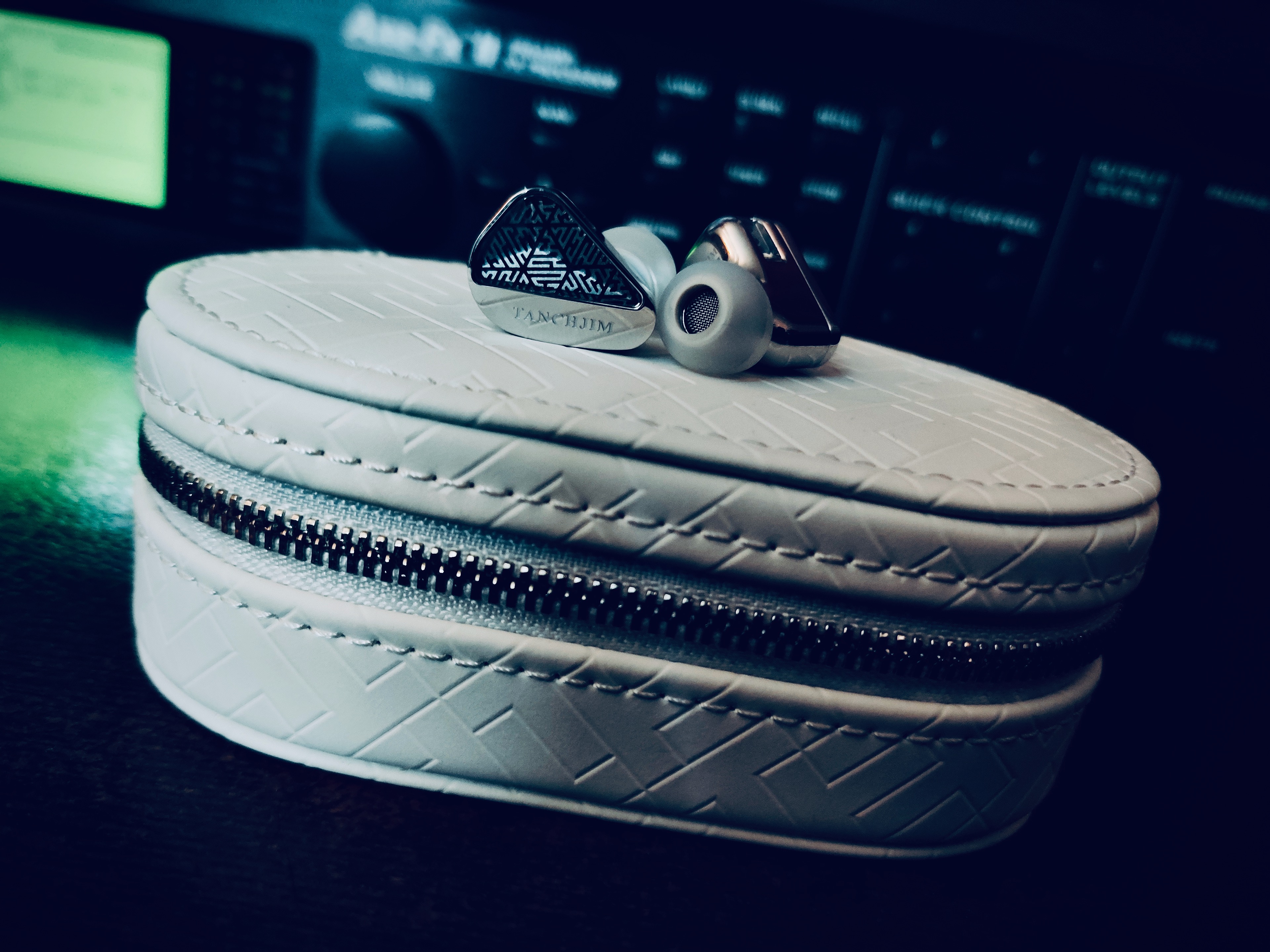
Included in the box.
- Tanchjim Prism
- Cable
- Ear tips - 2 sets of SML (Bass & Treble)
- Leather case
- Manuals




Tech in Prism.
Prism has a 4th generation DMT dynamic driver with high polymer carbon nanotube diaphragm and a Sonion dual balanced armature driver. Prism uses a Vibration Suppression Metamaterial Back Cavity design which is based on the Helmholtz resonant cavity principle. What it basically does is absorb the reflections inside the cavity so that the transmitted sound is pure and natural. They’ve also designed a guided leakage channel port specifically to match the back cavity, which as per Tanchjim helps in managing the sound pressure in the inner cavity and optimises it by appropriately increasing the atmosphere flux. The nozzles feature an Italian SAATI filter and a nano-sized hydrophobic dust-proof coating. It effectively protects the nozzle from steam and dust entering and damaging the cavity.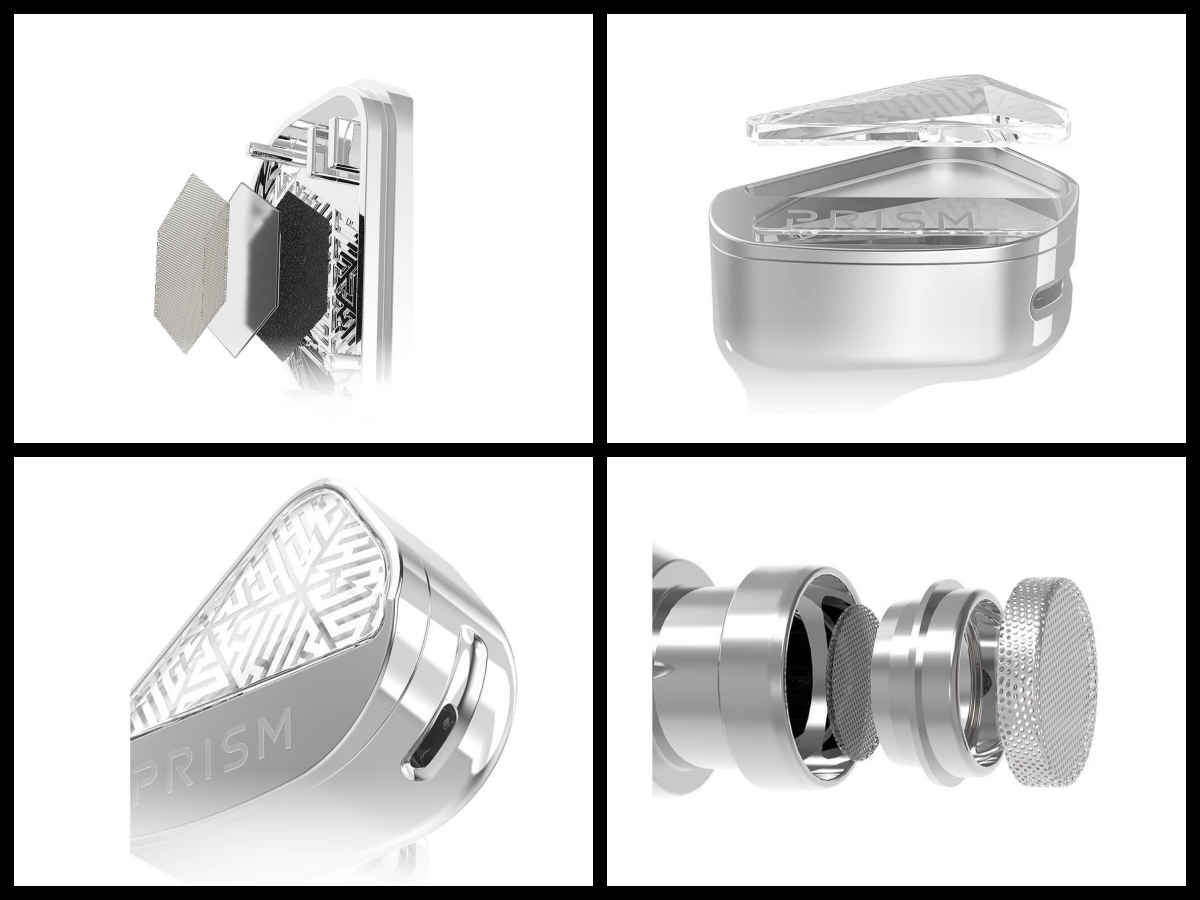
Build Quality.
Prism features handcrafted glass face covers and stainless steel shells. The sapphire glass used is made by professional craftsmen with hand-polishing and grinding techniques. The underlying pattern is made by electroplating and etching. This results in the faceplate looking like you're looking at a prism from one of the top corners. It is quite a spectacular design I must say!Tanchjim is known for blingy design language and Prism is no different. It has the kind of bling which makes it look expensive. The overall build quality is spectacular! The stainless steel shells have a reassuring weight but don't feel weighty in the ears. They have nice tight 2-pin sockets which hold the cable snugly and the nozzles have a nice lip to hold the ear tips.
Cable - The silver-plated monocrystalline copper cable has a whitish clear sleeve with a metal wire wrapped around that gives it a blingy appearance. The y-split has a nice Austrian crystal on it, which may go unnoticed if you don't know or observe carefully.
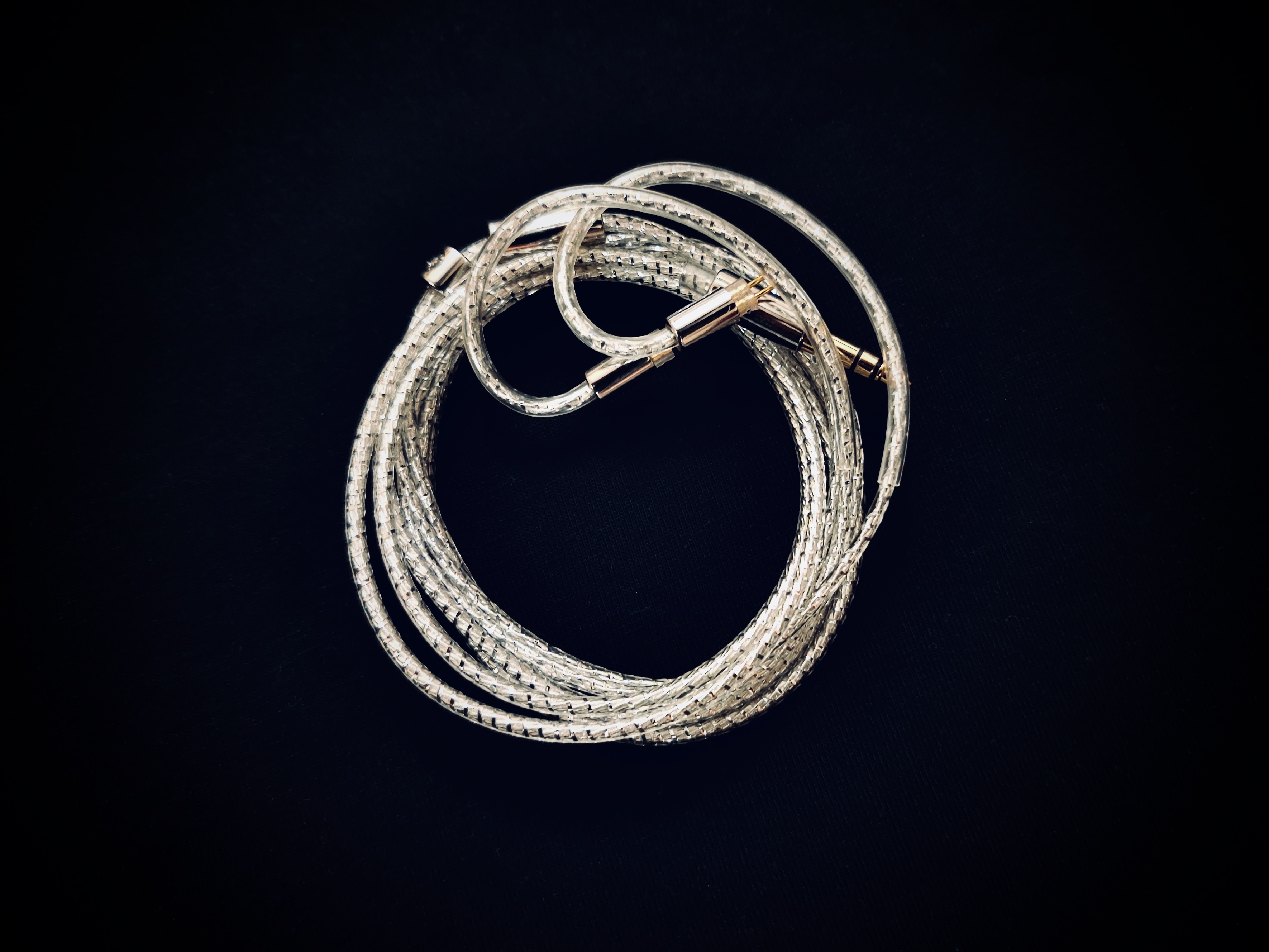
Case - The case is white with Ts assembled in a Tetris style pattern. It's a bit flashy for my taste but fits the IEM+cable and all ear tips nicely.
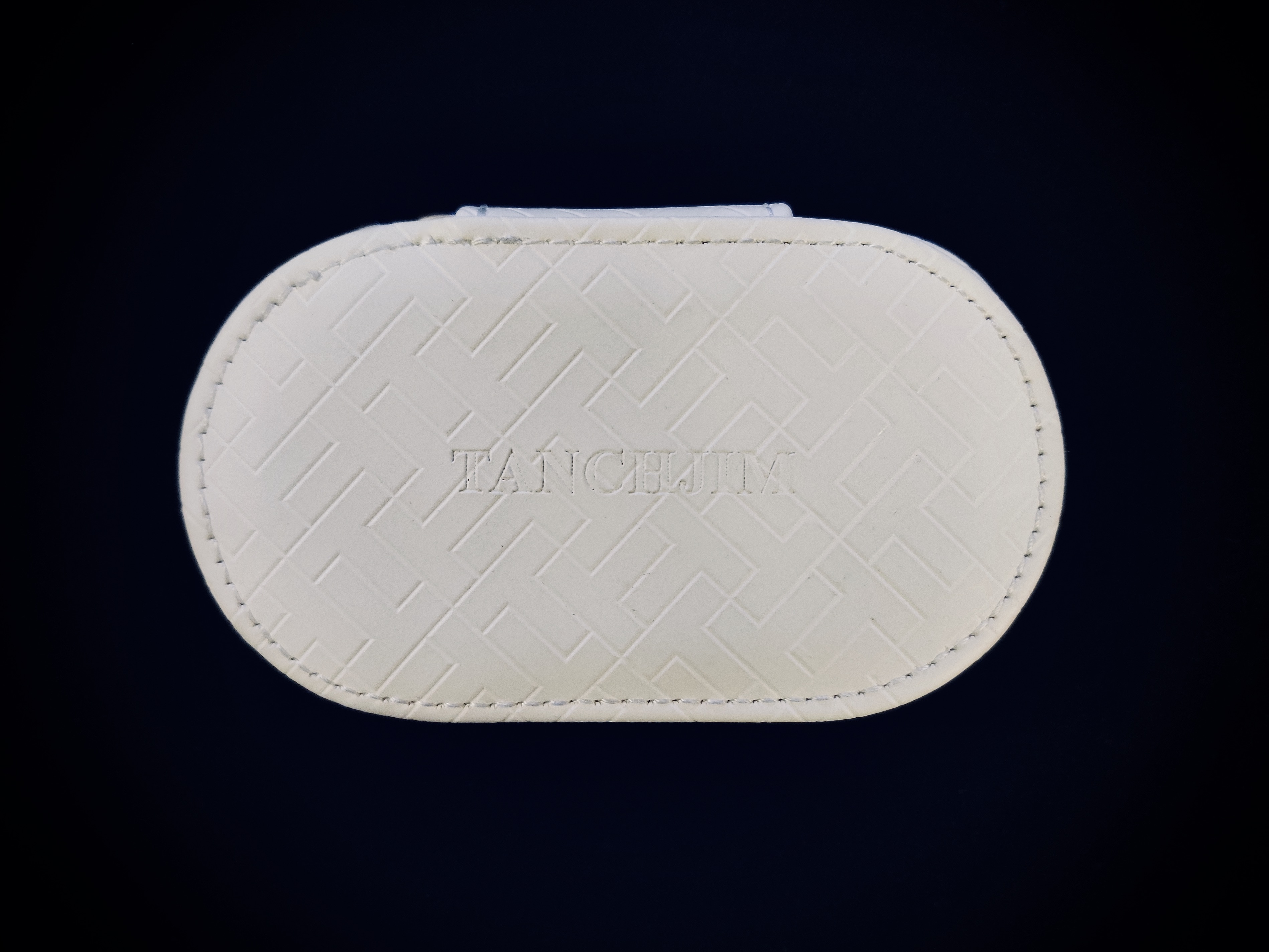
Fit and Comfort.
Prism fits me much better than Oxygen and I get a nice, fairly snug and comfortable fit with the large size stock ear tips and even better with BGVP A07 and Symbio W ear tips. It's still not as snug as semi-custom shaped resin shell IEMs like Softears RSV but is very comfortable for long listening sessions. Being a vented IEM, it might not be the best option for extremely noisy environments but should work fine as an everyday carry IEM for subway/train rides and similar moderately noisy environments.
Sound Analysis.
Note - Prism comes with 2 sets of ear tips - Treble and Bass. I personally prefer the Treble tips for the fit but I don’t really perceive them sounding much brighter than the Bass tips. For Prism to sound its best, make sure you have a good seal with the ear tips you're using. I highly recommend tip rolling different ear tips for snuggest fit and best sound.
Summary - Prism's tuning is based around the Harman Target curve. It traces the curve fairly closely till 5kHz but deviates from it primarily in the treble region, where it is neutral to warm in the lower-treble and mid-treble presentation, and airier post 12kHz especially in the air region, resulting in very nice top end presence and extension. What caught my attention and impressed me right off the bat was Prism's recreation of soundstage space of the recording with very good spatial imaging and separation. Tanchjim IEMs have always been good at this but with Prism's stronger clarity, bass performance and instrument definition than its predecessors, it is a more interesting and exciting listen with the kind of music I listen to.
As an example - Porcupine Tree recently released a song for the first time in 12 years called 'Harridan'. I first listened to it on the Moondrop Blessing2 and it sounded great as expected. I then switched to Prism and was pleasantly surprised. The bass had excellent definition and isolated clarity in the centre. Steven Wilson's guitars too had really good clarity with very crisp and precise imaging in the soundstage. Gavin Harrison's drums particularly sounded fantastic. The cymbals and snare ghost notes had a very clear, life-like presence. Though Prism is tuned a bit differently than Blessing2, with slightly more upper-midrange forwardness, more sub-bass and mid-bass (in line with the Harman Target) and more upper-treble presence compared to Blessing2, Prism has punch and dynamism like the Focal Elex headphone has. On top of that, even though I quite like Blessing2's soundstage presentation, Prism's recreation of ambience of the song and separation between layers is particularly impressive. Prism's soundstage sounds super clean and clear without any hint of any bloom or muddiness.
Let's break it down further...
Bass – Prism has a dynamic driver for bass with an 8dB bass shelf below 200Hz, which is perfectly in line with Harman target's 8dB bass shelf. In comparison, Moondrop's IEMs like Kato and S8 have a 6dB bass shelf. Prism has very good DD bass timbre, punch, impact as well as rumble. Since it has a DD with a bit more sub-bass presence and ever so slightly more mid-bass than Moondrop S8, it slams and hits harder in comparison. Also, since Prism has very good left to right image separation, bass guitars have very clear and well separated note definition in the centre image.
Mids – Prism's midrange is clean, clear and micro-detailed. It has a fairly linear and neutral lower-midrange and forward upper-midrange presentation with around 10dB pinna gain. Its upper-midrange presentation is a tiny bit more forward than Tanchjim Oxygen but is again more in line with the Harman target and actually kinda similar to Softears RS10's. Even though Prism's pinna gain at 4k-5kHz traces the Harman Target curve 'almost' perfectly, if you're used to Moondrop IEM's style of gain in this 4k-5kHz region (particularly the S8 or Blessing2), which is shy of the Harman Target by around 3-4 dBs, you'll hear Prism highlighting the initial attack of instruments, particularly how the drum sticks hit the hi-hat and drum shells, making them sound crispier and more present than Moondrop IEMs. It also highlights tiny nuances of the instruments and performance. But on the other hand, it can also make Prism come off slightly shoutier to people who like their pinna gain served on the easier side of the Harman Target. I personally find Prism's upper-midrange more engaging than the S8 and Blessing2's because it makes instrument definition more prominent in the soundstage, which I being a musician and detail obsessed listener prefers and likes. It works particularly well with songs of artists like John Mayer, Hunter Hayes, Gavin James, James Bay, Adele, The Bros. Landreth, Keith Urban, etc. Since the midrange is revealing and has good resolution, it brings out the softer instruments and other tiny nuances in the background cleanly and clearly.
Treble - It has neutral to warm lower-treble and mid-treble tuning but has a north of Harman-neutral upper-treble boost, which is responsible for its open and airy signature. Prism has good top end extension. Top end of acoustic guitars and orchestral instruments have very nice crisp definition. There is no sibilance or any harshness. The overall treble tuning creates for a comfortable but exciting listen, where songs have your attention grabbed most of the time but without coming off too bright or sizzly.
Technical Performance - As I mentioned before, the thing that impressed me most in Prism is how open, clean, wide and deep its soundstage sounds. A lot of good IEMs are able to do width fairly well but not depth as nicely. I don't say this lightly but Prism does both really well and along with excellent imaging performance, it enables a very engaging, holographic listening experience - not something you get to experience with IEMs everyday in general. Resolution, instrument definition and micro-detail retrieval is pretty good for the price too. It works really well with guitar based music. Songs of artists like MuteMath, Porcupine Tree, John Mayer, Hunter Hayes, Shawn Mendes, etc sound really good with Prism.
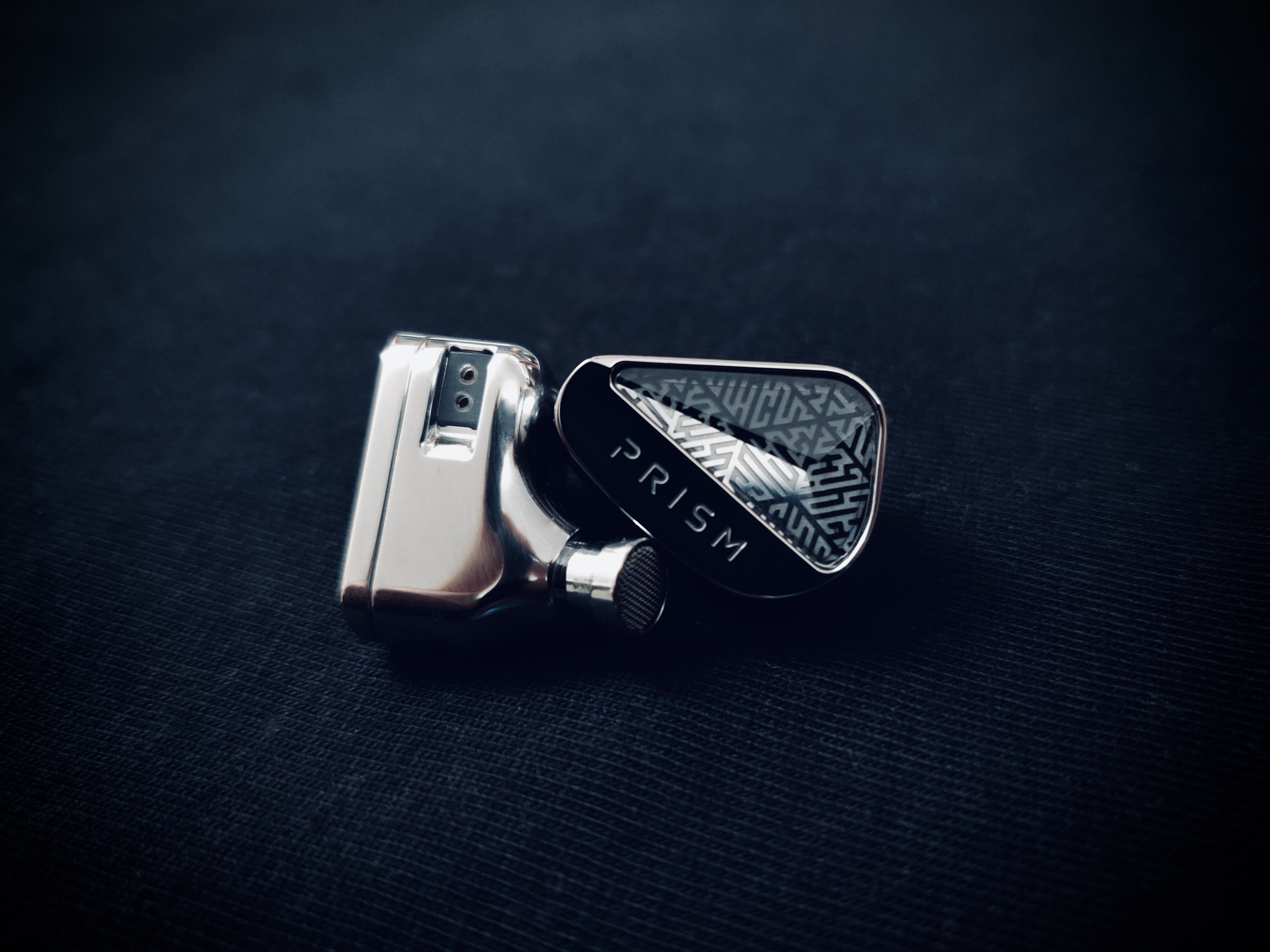
Comparisons.
Tanchjim Oxygen - Oxygen has a single DD whereas Prism has 1DD+2BAs. They have a similar Tanchjim house sound. In fact, it's the Prism that follows the Harman Target more closely than Oxygen does. Comparing them back to back, I hear Prism having more sub-bass presence and slightly more forward upper-midrange whereas Oxygen is slightly brighter in its lower-treble as well as upper-treble presentation, though the perception of difference in airiness is more subtle than outright prominent. Prism's sub-bass definitely slam harder and has slightly better note definition and separation. Besides that lower-midrange presentation is fairly similar. Both have good imaging but I hear Prism being slightly stronger in this area, with a clearer centre image and a slightly more open sense of soundstage space. Prism is also slightly more resolving of the two and has stronger instrument definition owing to the more forward upper-midrange pinna gain.
Moondrop Blessing2 - Blessing2 has 1DD+4BA. Prism has a stronger bass shelf by around 4dBs, more in line with the Harman target. As a result, Prism's bass rumbles and punches harder. Both have a similar lower-midrange presentation but Prism has slightly more forward upper-midrange. Blessing2 is brighter in lower-treble but Prism is more even in its mid-treble and upper-treble presence and extension, while both are similarly airy. Prism has a punchier and slightly fuller signature owing to more fullness in the 20-200Hz region. Prism also has slightly more clarity and better instrument definition, is more resolving of the two and has the stronger imaging with a wider and deeper sense of soundstage space.
Moondrop S8 - Even though both are tuned around the Harman Target curve, as per graphs Prism follows the curve more closely till 5kHz than S8 does. To me, S8 has a slightly warmer tonality whereas Prism is a slightly brighter, cleaner and a slightly more exciting listen. Right off the bat, I hear Prism having a cleaner sense of space, slightly wider soundstage as well as better imaging and separation. Prism has more bass punch and slam with slightly better bass timbre and more authoritative sub-bass presence and definition, owing to it having a nice dynamic driver handling bass duties which is tuned to have around 2dB bigger bass shelf than S8. Lower-midrange is fairly similar but Prism's upper-midrange is ever so slightly more forward in the 4kHz-5kHz region, which is again a bit more in line with the Harman target. As a result, Prism has a slightly crisper signature and S8 is a slightly warmer listen in comparison. They are similarly smooth in their lower-treble presentation but Prism is slightly airier in the upper-treble region.
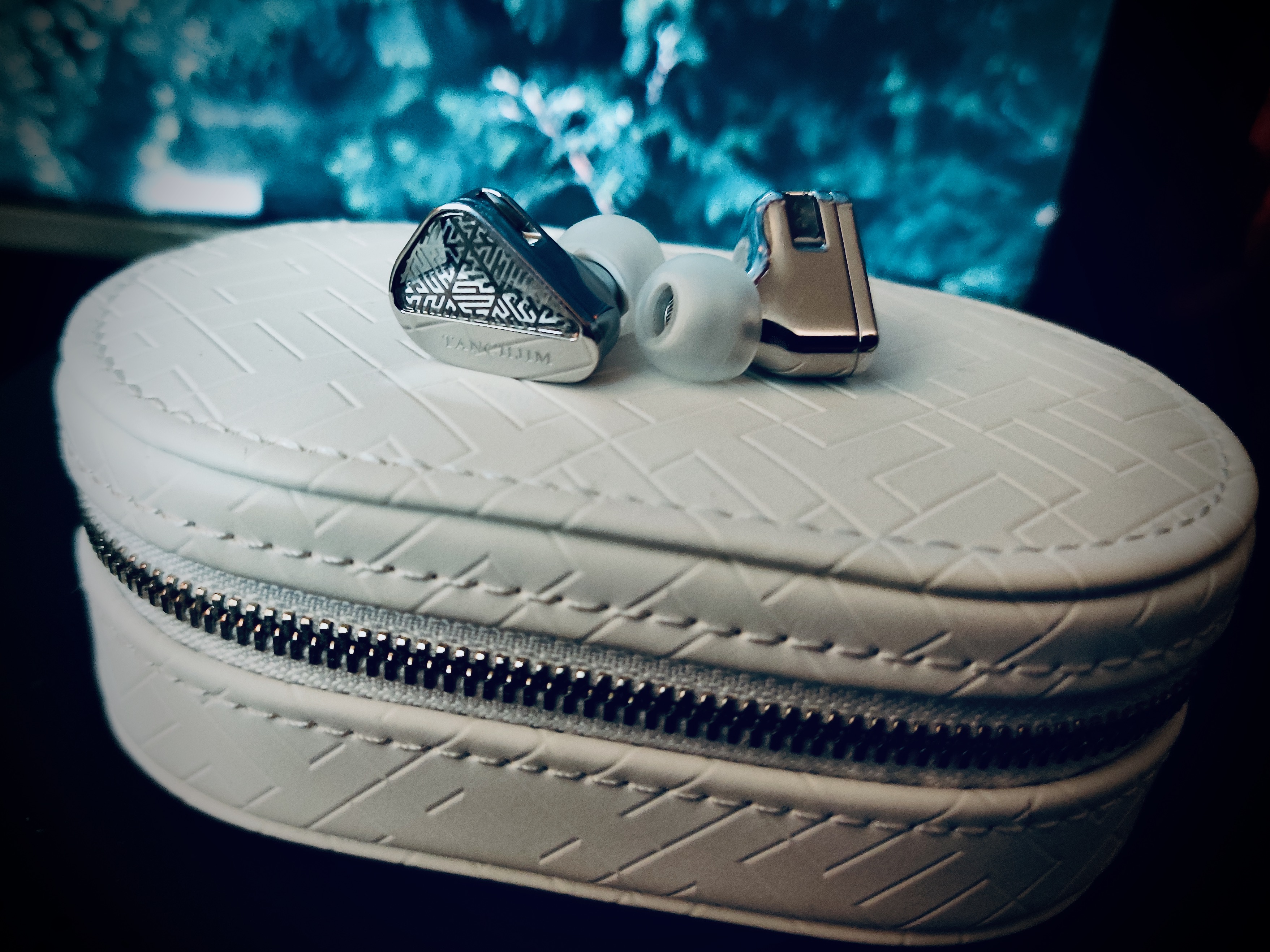
Conclusion.
I really liked Oxygen when I reviewed it a couple of years back and to be honest, I was quite looking forward to checking out Prism when I got to know that Tanchjim was releasing a new flagship. A $599 IEM with 1DD+2BA config might not seem impressive when it comes to driver configuration (IMO, it doesn't really matter) but Prism sounds really good and works really well with the kind of artists and music I listen to. It follows the Harman Target quite closely till 5kHz, more so than Oxygen, Blessing2 and even the S8. It is smoother in lower-treble and airier in its upper-treble presentation. It has excellent design and build quality with confidence inspiring stainless steel shells, good deep bass punch and rumble, good midrange tonality and treble tuning that enables excellent clarity and strong instrument definition. What it does even better is recreation of soundstage space of the recording with very good spatial imaging and separation. It has a very clean sounding soundstage which I particularly like and an overall high engagement factor. If you're looking for a hybrid or a highly attractive, good sounding IEM with very good build quality around the $600 price point, give Prism a try!Gear used for testing and review.
- DAPs – iBasso DX240 | HiBy R6 2020
- Laptop – Apple Macbook Pro 15″
- Phone – OnePlus 7 Pro
Artists I like and listen to.
- Rock - Foo Fighters, Linkin Park, Switchfoot, Imagine Dragons, Daughtry, Green Day, MuteMath, X Ambassadors, Dave Matthews Band, Vertical Horizon, Our Lady Peace, Lifehouse, Fall Out Boy, Breaking Benjamin, Muse, ACDC, Audioslave, Rage Against the Machine, Biffy Clyro, I Am Giant, Normandie, Paramore, Slash & Guns N Roses, 3 Doors Down.
- Pop Rock - John Mayer, Coldplay, Paul McCartney, James Bay, Hunter Hayes, Niall Horan, Keith Urban, The Bros Landreth, Bryan Adams,
- Progressive Rock/Metal - Porcupine Tree/Steven Wilson, Karnivool, Tool, Dead Letter Circus, Periphery, Lamb of God.
- Pop/Soft Rock - Ed Sheeran, Adele, Taylor Swift, OneRepublic, The Script, Gavin James, Magic Man, Maroon 5, Bruno Mars, Charlie Puth, Dua Lipa, The Weeknd, Oasis, Panic! At the Disco, TwentyOne Pilots
- EDM - Chainsmokers, Zedd
Last edited:

